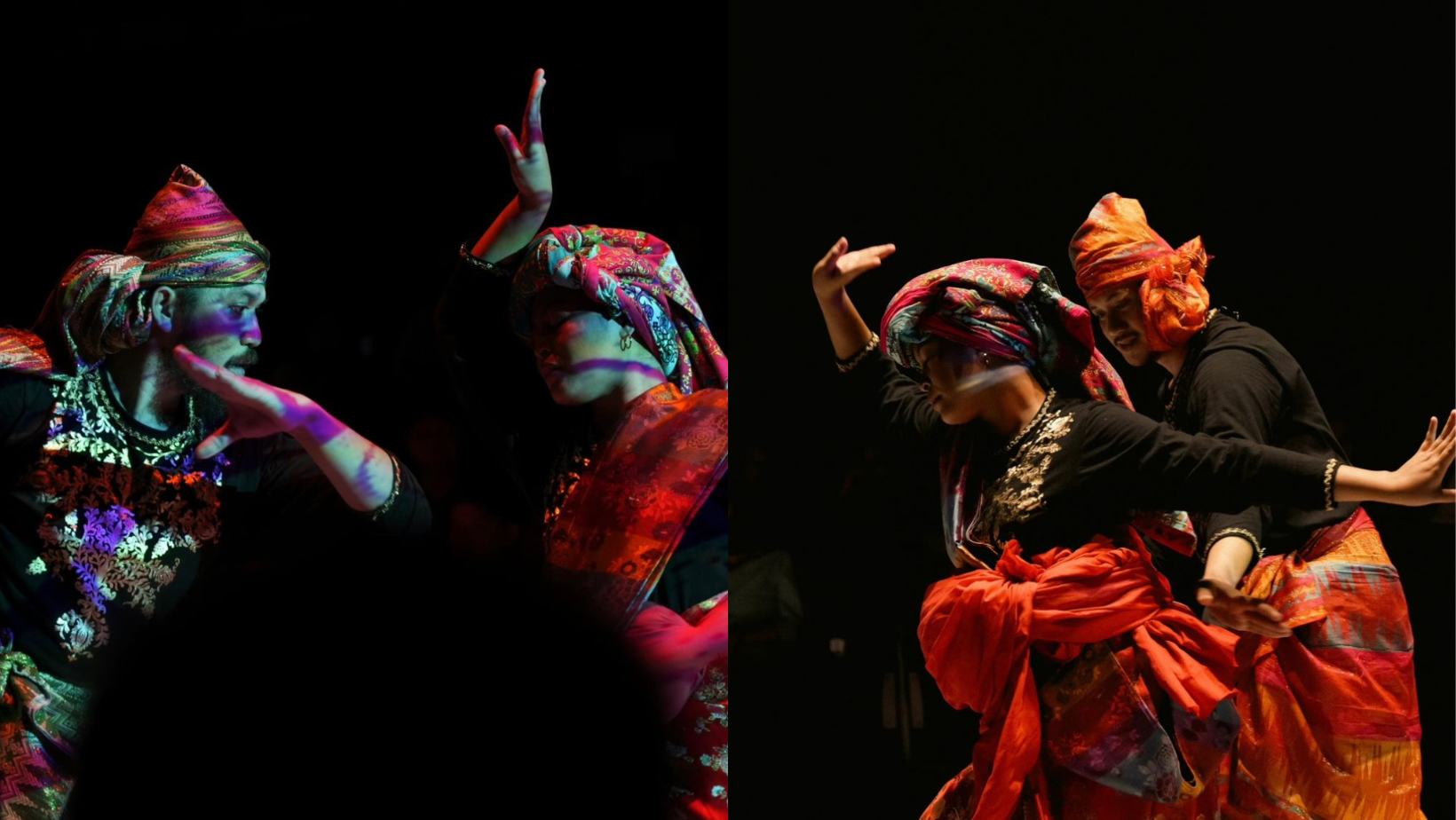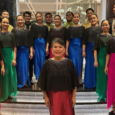
Photos / @tanghalang.pilipino and @crtvsense on Instagram
At its core, Tanghalang Pilipino’s Anak Datu is a story about the Imaos, a real-life Tausug family whose patriarch is Abdulmari, who would become a National Artist for Visual Arts in 2006. His wife is Grace, a self-assured woman who isn’t afraid to express her opinions and beliefs. Their child is Toym, who would himself grow up to become an accomplished sculptor and painter.
Their story is compelling enough, but the theater production quickly expands into something more: soon, we are introduced to two more tales that intertwine with the Imaos’ history: Anak Datu, a short story Abdulmari wrote about about the son of a village chieftain in the Sulu Archipelago during pre-colonial Philippines, and the struggles of the Tausugs in Mindanao that led to the birth of the Muslim resistance.
While these stories may sound disconnected, the artistic team of Anak Datu masterfully combines all three stories to create a beautiful and moving narrative about the history of the Philippines.
View this post on Instagram
The actors bring the story to life with grace and passion. Carlos Dala plays Toym and the young Karim with childlike wonder. Paul Jake Paule and Antonette Go as the elder Imaos are compelling in their roles and bring so much conviction to their motivations.
Another highlight is Gie Onida, who plays Jibin Arula, the lone survivor of the Jabidah Massacre in 1968. His role mainly narrates what happened in Jabidah but he brought so much heft and emotion. The ensemble also shared their own stories during this time and it was equally gut-wrenching.
The cast in the short story Anak Datu was delightful in its choreography. Since it is a folk tale, it relies on song and dance to tell the story.
Marawi-based Hassanain Magarang, the choreographer who also takes on the role of Datu Karim, created wonderful sequences inspired by the Tausug pangalay that were literally breathtaking. The end of act one, where Lhorvie Nuevo-Tadioan as Putli Loling exits the stage elevated on bamboo poles, is magical. Her dedication to her craft explains why she was recognized as the Best Featured Actress for this role at last year’s Aliw Awards. It’s important to note that she won this award without any speaking lines.
View this post on Instagram
Tex Ordoñez-de Leon added context with her beautiful singing as the “tagapagsalaysay ni Putli Loling.” This is complemented by the songs and chants inspired by Southern Philippines, by composer and music director Chino Toledo.
This large and talented cast is supported by the costume and set design by Carlo Villafuerte Pagunaling and Toym Imao (yes, the character in one of Anak Datu‘s stories). Both are lavish, sumptuous, and are practically an exhibit of how pre-colonial Philippines dressed. The tableau at the end of the show is truly beautiful.
View this post on Instagram
It’s no surprise that Anak Datu is visually dazzling and emotionally moving. The artistic team is made up of heavyweights: the story is written by Rody Vera, a Palanca Award Hall of Famer. It is directed by Chris Millado, who has worked on hit productions like Mabining Mandirigma and Zsazsa Zaturnnah Ze Musikal. And of course, the Anak Datu story is written by a National Artist.
Anak Datu, the theatrical production, is a must-watch. It explores the themes of identity, heritage, and peace. These three topics continue to be relevant today. That the show is beautiful and moving is just the cherry on top.
What do you think? Share your thoughts below!
Do you have a story for the WhenInManila.com Team? Email us at story.wheninmanila@gmail.com or send us a direct message at WhenInManila.com Facebook Page. Interact with the team and join the WhenInManila.com Community at WIM Squad. Join our Viber group to be updated with the latest news!




